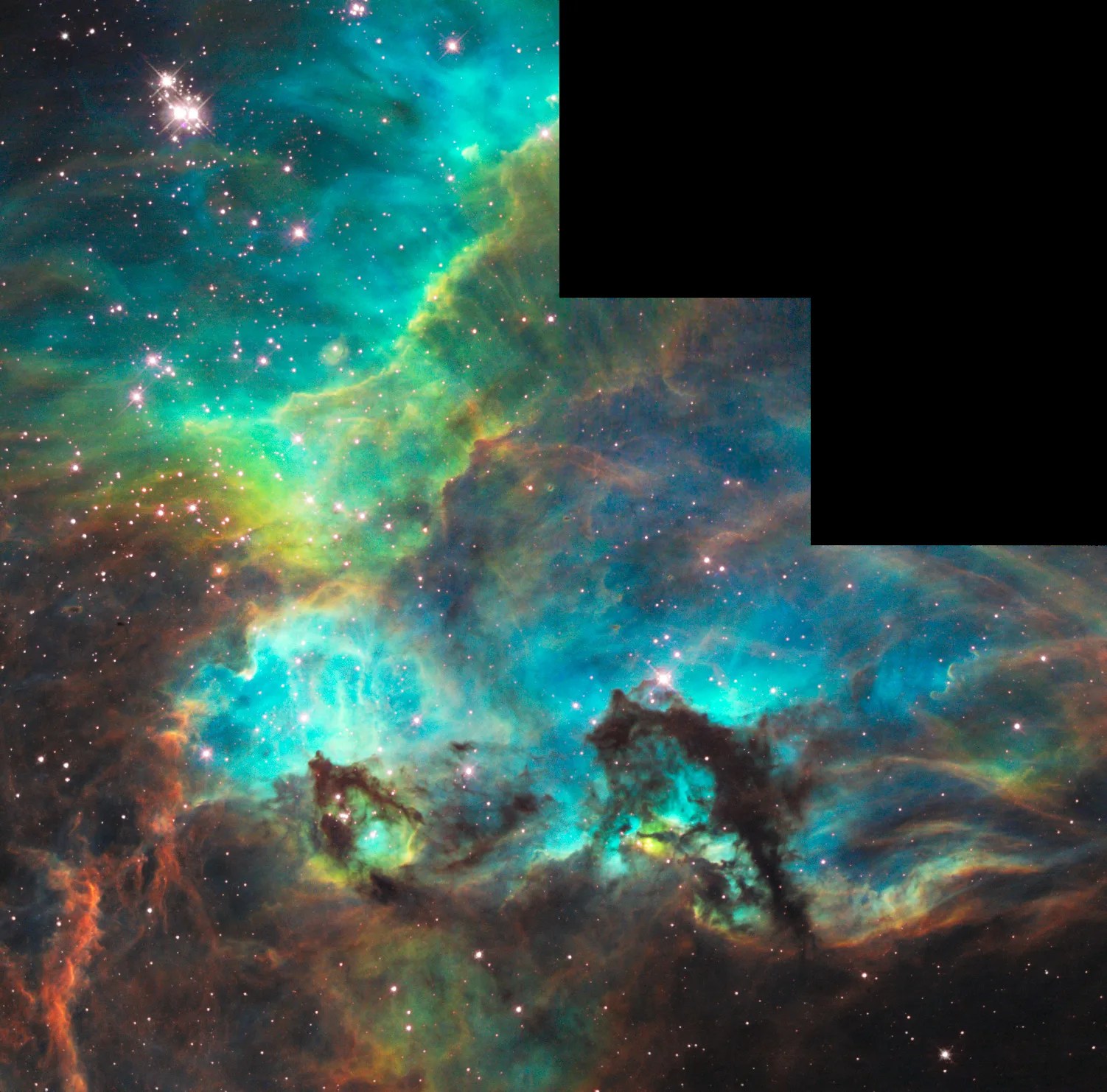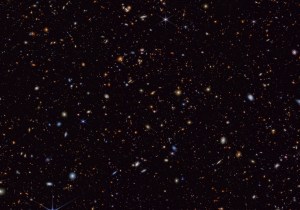On its 100,000th orbit of planet Earth, the Hubble Space Telescope peered into a small portion of the Tarantula Nebula near the star cluster NGC 2074, unveiling its stellar nursery. The region is a firestorm of raw stellar creation, triggered perhaps by a nearby supernova.
The image reveals dramatic ridges and valleys of dust, serpent-headed "pillars of creation," and gaseous filaments glowing fiercely under torrential ultraviolet radiation. The region is on the edge of a dark molecular cloud that is an incubator for the birth of new stars.
The high-energy radiation blazing out from clusters of hot young stars is slowly eroding nebula, and another young cluster may be hidden beneath the circle of brilliant blue gas.
The region is in the Large Magellanic Cloud, a satellite of our Milky Way galaxy that is a fascinating laboratory for observing star-formation regions and their evolution. Dwarf galaxies like the Large Magellanic Cloud are considered to be the primitive building blocks of larger galaxies.
Image Credit: NASA, ESA, and the Hubble Heritage Team (STScI/AURA)































